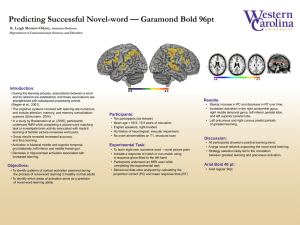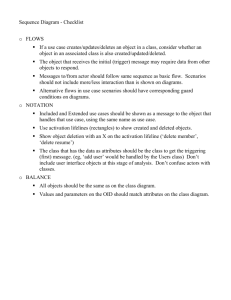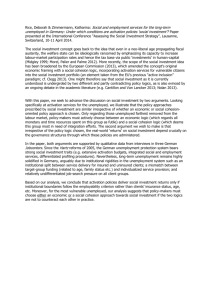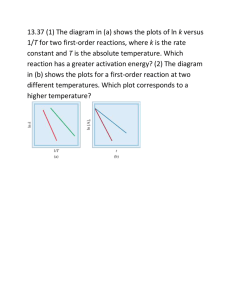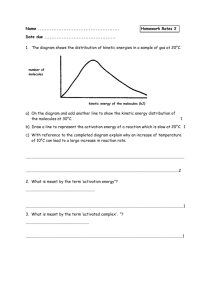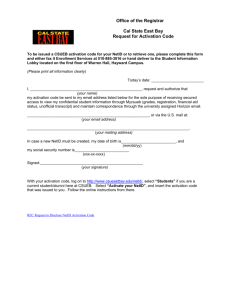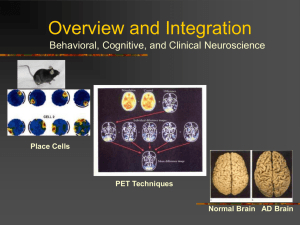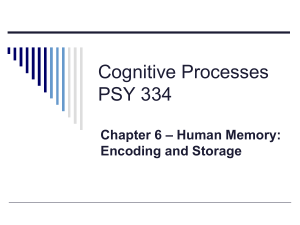Basic Presentation Outline for a 10 Minute Speech (adjust accordingly)
advertisement
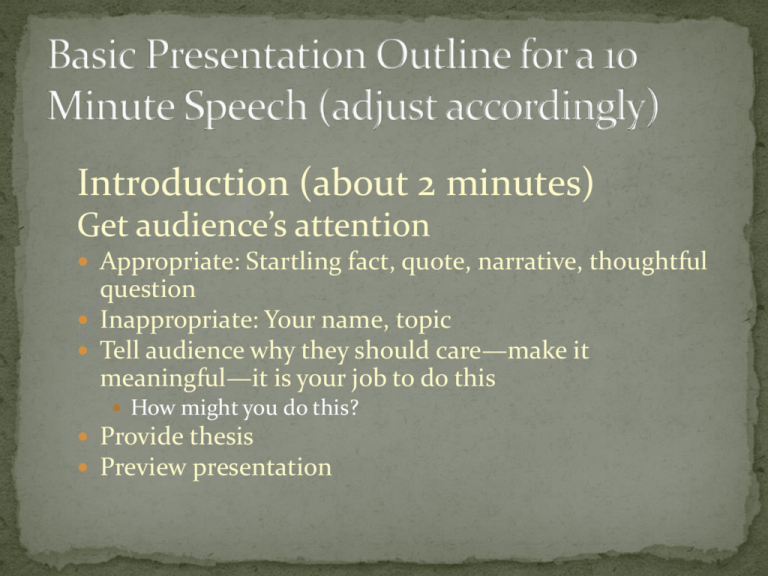
Introduction (about 2 minutes) Get audience’s attention Appropriate: Startling fact, quote, narrative, thoughtful question Inappropriate: Your name, topic Tell audience why they should care—make it meaningful—it is your job to do this How might you do this? Provide thesis Preview presentation Body (7 minutes) Issue/Topic 1 Transition statement: Now that we understand X, let’s move on to discuss Y. Issue/Topic 2 Transition Issue/Topic 3 Stop at 3 major points—our brains remember and sort information in groups of 3 Weakest or least significant point should go in the middle— primacy and recency Conclusion (1 minute) Review of 3 major points/issues End with a statement of closure A great way to do this is to return to the way you opened to bring it full circle Ex: Attention getter: Former NFL players’ number one cause of death? Sleep deprivation. Closure: If sleep deprivation is enough to kill a 300 lbs. lineman, we should all be vigilant about getting at least 8 quality hours a night. Non-existent: Some speakers use all of their time for the message and offer no conclusion at all—huge mistake. Afterthought: Some conclusions may as well not be there because it was such an afterthought. Be strategic—“thanks” doesn’t count. Introduce new idea: Never introduce a new idea in the conclusion. It is for summarizing and providing closure. Recall: Americans have very poor recall in general because we have short cultural attention spans. Grouping elements correctly (in 3’s) can help your audiences recall your message. Transitions, signposts assist in making sense of speeches. Introductions and conclusions count—primacy and recency again. Verbal Delivery Issues:You'll want to work towards an elevated, conversational style. The audience wants you to talk to them not at them. Use a sincere tone that lets the audience know you're that you are invested in the material. Be yourself. Word choice: Know your definitions, avoid speaking like a thesaurus Avoid jargon and technical terms when possible—if they are necessary, define any terms people might not know Use vivid, colorful language Fix this: The city is a nice place to visit. Eye contact: strategically place friendly faces Gesture: Try to be natural; “touch the ring” Stance: Don’t lock your knees, don’t put your hands in your pockets or behind your back Vocalics: Pause, up or down in volume Rate: Not so fast we can’t follow, not so slow we feel like its patronizing Know you will speak faster in front of people than you do in practice by yourself Rehearse the entire presentation including slides, handouts, etc. Look engaged in the presentation even if you are not the one speaking at the time (we can still see you!). An individual’s level of fear or anxiety associated with either real or anticipated communication with another person or persons. Empathy!!! Excessive activation: occurs when the normal increase in activation in anticipation of a performance continues beyond the point where an individual is able to control it. regurgitating meals, fainting Inappropriate cognitive processing: depends on the way activation is interpreted—everyone feels activation, but some “read” it as “getting amped” and others read it as “I’m going to die.”people who “choke” in a game because any activation is perceived as negative Inadequate communication skills: person feels that they do not know how to communicate effectively. perception of your skills more important that your actual skill level Visualization (Hopf & Ayres, 1992)Encourages people to think positively about communication by taking them through a carefully crafted script Picture the day full of confidence and energy, ending with a successful presentation—student should congratulate him/herself on a job well done Breathe—breathing exercise Plant friendly faces Know your stuff—practice, practice, practice Know the room DO NOT MEMORIZE OR READ YOUR SPEECH Sleep and water Notes to yourself on your notes—smile, breathe, etc. What to wear, what to put your notes on, etc. Perfection is the enemy Keep at it—it will get better
